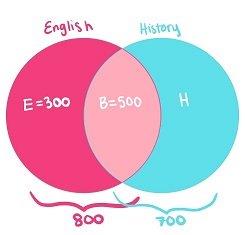Case Study Based Questions Class 10 Exam 2021
CBSE has revised its syllabus this year in the wake of the COVID-19 pandemic. Due to the complete lockdown situation schools were closed and it affected the students the most. As a result, the board decided to reduce the syllabus this year. A new question pattern has been introduced as well. The Case Study Based Question is one of the new changes. Here is some Case Study based question to practice with.
Case Study Based Question 1:
Earth
Earth is a sphere and it has imaginary lines on it namely called latitudes and longitudes. Earth takes 24 hours(approx.) to rotate 360 degrees on its axis responsible for a day and a night. Indian Standard Time(IST) is calculated on the basis of 82.5°E longitude passes through the city of Mirzapur, Uttar Pradesh. GMT is the time zone of London.

Side view Top View
- How much 1° longitude will mean in terms of time?
- 1 minute
- 2 minutes
- 4 minutes
- 6 minutes
- London is At 0° longitude, what will be the time in India if it is 5:30Am in London?
- 10:00 AM
- 11:00 AM
- 12:00 PM
- 5:30 PM
- Earth is partitioned in 360 equal parts vertically, 180° E and 180 ° W. If Australian time is +9.5 hours more than GMT. What is its longitude?
- 130° E
- 130° W
- 145.5° E
- 145.5° W
- What is the volume of earth if the diameter of the earth is 12742km?
- 4/3{pi*6371}^3 cu. km
- 4/3{pi*12742}^3 cu. km
- 4/3{pi*6371^3} cu. km
- 4/3{pi*12742^3} cu. km
- Find the surface area of the earth.
- 4{pi*6371}^2 sq. km
- 2{pi*6371}^2 sq. km
- 4{pi*6371^2} sq. km
- 2{pi*6371^2} sq. km
Case Study Based Question 2:
Tower
A tower is of slant height 100 meters. The legs of the tower is inclined at 60° with the ground.

- Find the area of land on which the tower is standing.
- 50^2 sq.m
- 50√2 sq.m
- 100^2 sq.m
- 100√2 sq.m
- What is the height of this tower?
- 50√3 m
- 50 m
- 25√3 m
- 25 m
- What shape will be seen from the top view of the tower?
- A Point
- Octagon
- Square
- Triangle
- What is the mathematical name of the shape of the tower?
- Cone
- Pyramid
- Tomb
- Tower
- If the shadow of the tower is √7500 then what is the angle of elevation of the sun.
- 15°
- 30°
- 45°
- 60°
Case Study Based Question 3:
Venn Diagram
A Venn diagram consists of multiple overlapping closed curves, usually circles, each representing a set(group of objects).
Example 1 – Whales and fishes have their own properties represented in a circle each. The overlapping area of both circles contains the common property of both.

Example 2 – In a school total number of students is 1000. In which 800 likes English are 700 likes history and 500 likes both history and english.

- In a class, there are 15 students who like chocolate. 18 students like vanilla. 3 students like both. how many students are there in the class?
- 33
- 30
- 36
- 27
- How many students like only chocolate?
- 10
- 12
- 15
- 18
- If one student is selected at random what is the probability that the student like both vanilla and chocolate?
- 1/10
- 3/10
- 7/10
- 7/11
- If each student who likes vanilla only has 20 rupees and those who likes chocolates only have 10 rupees each and those who like both have 10 rupees. What is the mean of the money they have?
- 12
- 15
- 18
- 20
- If students who like vanilla have to sit behind the students who like chocolates only what is the maximum no. of students on one bench?
- 6
- 5
- 4
- 3
Case Study Based Question 4:
Class Room
60 Boys are sitting in a classroom 4 students per bench.

- Boy A is sitting on third bench on 3rd place and boy B is sitting on first bench first place. What is the distance between both the boys if each student and bench is spaced by 1 unit.
- 2
- √2
- 2√2
- 3√2
- How many bench are used in the class?
- 8
- 10
- 12
- 15
- What is the position of student C sitting on first bench at equal distance from both A and B?
- 2nd
- 3rd
- 4th
- none of these
- What is the maximum number of rows in which boys stand behind a group of 12 girls in an assembly?
- 12
- 5
- 6
- 8
- If one student is selected at random from the assembly. What is the probability that the student is a boy?
- 1/5
- 4/6
- 5/6
- 1
Answer key
| Case Study Question 1 | 1. (3) | 2. (2) | 3. (3) | 4. (3) | 5. (3) |
| Case Study Question 2 | 1. (2) | 2. (1) | 3. (3) | 4. (2) | 5. (3) |
| Case Study Question 3 | 1. (2) | 2. (2) | 3. (1) | 4. (2) | 5. (1) |
| Case Study Question 4 | 1. (3) | 2. (4) | 3. (2) | 4. (1) | 5. (3) |